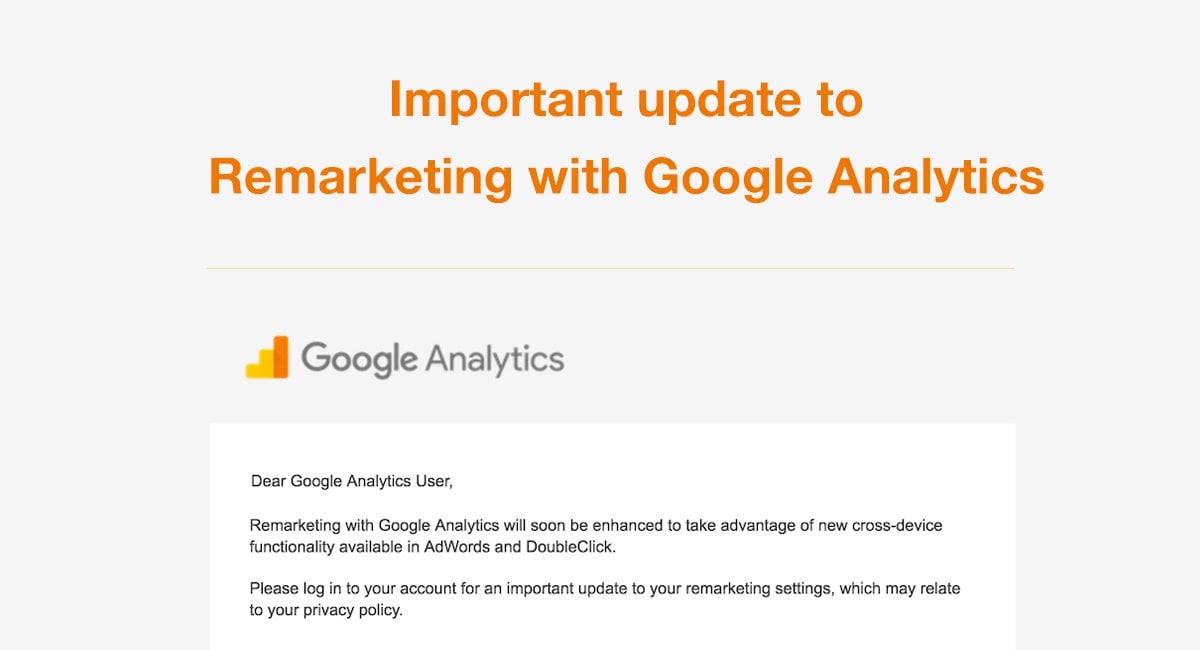The Benefits of Using Remarketing In Google Analytics
The Benefits of Using Remarketing In Google Analytics
Blog Article
Using Remarketing in Google Analytics: A Comprehensive Guide
Taking advantage of remarketing in Google Analytics offers businesses a strategic side in getting to out to prospective clients. This guide will certainly drop light on the vital steps included in harnessing the full capacity of remarketing in Google Analytics, leading to improved advertising end results.
Recognizing Remarketing in Google Analytics
Remarketing in Google Analytics allows organizations to tactically target customers who have previously interacted with their website or mobile application. By leveraging information from Google Analytics, businesses can create personalized remarketing listings based on user behavior, such as pages seen, actions taken, or details goals achieved. This effective tool makes it possible for organizations to re-engage with users that have actually shown interest in their solutions or items, eventually increasing the likelihood of conversion.
Comprehending the different kinds of remarketing strategies is crucial for an effective campaign - What Is “Remarketing” In Google Analytics?. Google Analytics offers numerous choices, consisting of standard remarketing, vibrant remarketing, and remarketing listings for search advertisements (RLSA) Each kind offers a special function and can be customized to meet details marketing goals
In addition, examining the efficiency of remarketing projects is vital for maximizing outcomes. Google Analytics supplies valuable understandings right into the performance of various remarketing strategies, permitting organizations to make data-driven decisions and fine-tune their targeting strategy. By continuously keeping an eye on and readjusting remarketing initiatives based on analytics data, companies can make the most of ROI and drive success in their advertising efforts.
Setting Up Remarketing Projects

After establishing audience checklists, the following step is to link Google Analytics with Google Advertisements. By connecting these 2 platforms, businesses can perfectly move target market listings from Google Analytics to Google Ads for remarketing objectives. This assimilation enables more accurate targeting and much better project performance.
When the accounts are connected, companies can create remarketing campaigns in Google Advertisements using the target market provides previously defined in Google Analytics. These projects can be tailored with specific advertisement creatives, messaging, and bidding techniques to successfully re-engage with previous site visitors and drive conversions. By adhering to these steps, businesses can take advantage of the power of remarketing to improve their marketing initiatives and raise ROI.
Making Use Of Target Market Segmentation Strategies

Predefined sections in Google Analytics enable you to swiftly evaluate usual target market classifications like new customers, returning customers, or individuals who completed a details objective on your internet site. Custom sections, on the other hand, allow you to develop special sections based on certain criteria that are very important to your business objectives. Dynamic remarketing listings instantly readjust based upon individual behavior, showing customized advertisements to users who have actually connected with your site in specific methods.
Studying Remarketing Efficiency Metrics
Upon assessing the efficiency of remarketing campaigns in Google Analytics, the evaluation of vital performance metrics gives valuable insights right into audience involvement and conversion rates. By delving right into metrics such as click-through prices (CTR), conversion rates, price per procurement (CERTIFIED PUBLIC ACCOUNTANT), and return on advertisement spend (ROAS), marketing Related Site experts can evaluate the success of their remarketing efforts. Examining these metrics allows marketing experts to maximize projects, improve target market targeting, and assign spending plans successfully to improve general remarketing efficiency.
Optimizing Remarketing Strategies
When refining remarketing techniques in Google Analytics, concentrating on audience division is critical for attaining campaign success. By dividing your audience into particular sectors based on their actions, demographics, or interests, you can tailor your ads much more efficiently to every group. This targeted method boosts the likelihood of engaging individuals that have already shown interest in your product and services, causing greater conversion link prices.
Another critical element of optimizing remarketing strategies is continuously screening and refining your campaigns (What Is “Remarketing” In Google Analytics?). A/B screening various ad creatives, messaging, or deals can aid you determine what resonates finest with your audience and drives the most conversions. By analyzing the efficiency of these tests in Google Analytics, you can make data-driven decisions to optimize your remarketing initiatives better
Furthermore, leveraging vibrant remarketing can substantially boost your project results. This function enables you to reveal individualized ads to individuals based upon their past communications with your website, showcasing solutions or products they have formerly checked out. By providing customized material to customers based upon their behaviors and rate of interests, dynamic remarketing can assist enhance interaction and drive conversions.
Conclusion
In conclusion, using remarketing in Google Analytics is a tactical approach to target users who have previously engaged with an internet site. By creating personalized audience checklists and using target market segmentation techniques, services can enhance remarketing advocate boosted conversion rates. Assessing efficiency metrics and constantly optimizing methods are vital for taking full advantage of the efficiency of remarketing efforts.
Google Analytics provides numerous alternatives, including conventional remarketing, vibrant remarketing, and remarketing lists for search advertisements (RLSA)After setting up target market lists, the next action is to connect Google Analytics with Google Ads. By connecting these 2 systems, organizations can flawlessly transfer target market lists from Google Analytics to Google Advertisements for remarketing objectives.As soon as the accounts are linked, services can develop remarketing projects in Google Ads utilizing the target market notes previously defined in Google Analytics.When refining remarketing strategies in Google Analytics, focusing on target market segmentation is critical for achieving campaign success.
Report this page